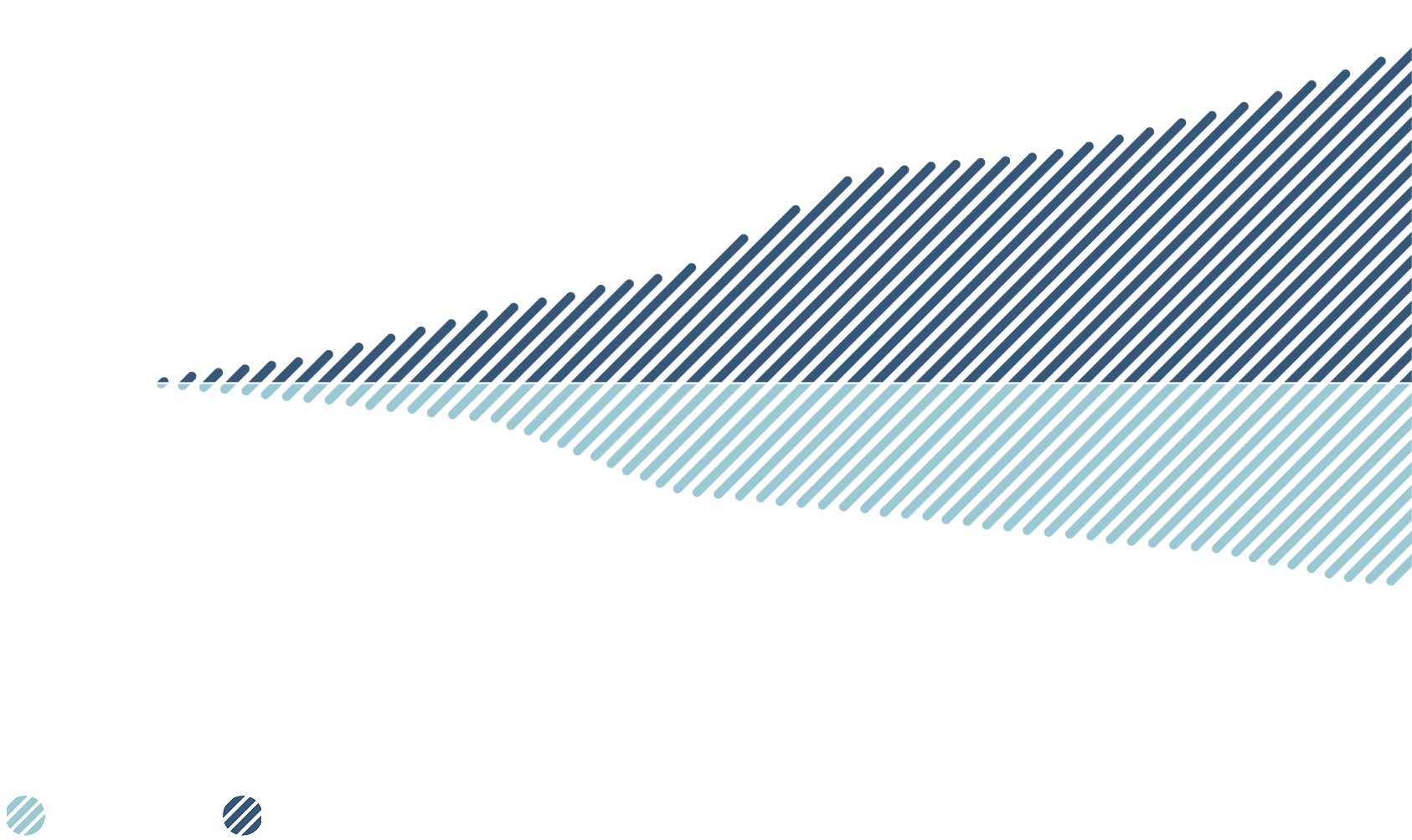
Our sustainability indicators and commitments
We disclose the results of our actions related to sustainability factors through various documents: the Sustainable Investing Report (SIR), the Sustainable Development Report (SDR) and the Annual Report (AR). We are also governed by a number of sustainability laws, regulations and policies that establish a framework that enables us to carry out our investment activities with rigour, efficiency and transparency. The following tables contain the available indicators and reference documents.
Our indicators
| Indicator | Target, ambition or action | 2024 disclosure | 2024 source | 2023 disclosure | |
|---|---|---|---|---|---|
| 1 | Value in $B of low-carbon assets | $54 B in low-carbon assets by 2025 | $58 B (including $15.5 B in Québec) |
SIR Section E SDR Action 4 |
$53 B (including $15 B in Québec) |
| 2 | Value in $B of Paris Agreement aligned assets | Support for assets with a strategy aligned with the Paris Agreement | $152 B ($58 B CBI, $79 B SBTi and $15 B in the process of being aligned) |
SIR Section E | $135 B ($53 B CBI, $50 B SBTi and $32 B in the process of being aligned) |
| 3 | Portfolio’s carbon intensity in tCO2e/M$ invested and as a percentage | 60% reduction by 2030 from 79.4 tCO2e/M$ invested in 2017 | 24.4 tCO2e/$M 69% reduction compared to 2017 |
SIR Section E SDR Action 4 |
32.2 tCO2e/$M 59% reduction compared to 2017 |
| 4 | Value in $B of transition assets | Support companies in heavy emitting sectors in their decarbonization strategy | $6.2 B | SIR Section E | $5 B |
| 5 | Fossil fuel targets in line with the science | Exit from oil production by the end of 2022 Exit from thermal coal production |
Exit from oil production under active management completed Exit from thermal coal mining |
SIR Section E | Exit from oil production under active management completed Exit from thermal coal mining |
| 6 | Increase our share of sustainability-themed donations and sponsorships | 14% of donations and sponsorships granted to be sustainability-themed by 2025 | 13% | SDR Action 5 | 13% |
| 7 | Reduce the carbon footprint of our three business offices in Québec | 35% reduction in emissions from our three business offices in Québec by 2025 compared to 2017 (2.75 kg CO2e/ft2) | 76% reduction compared to 2017 (0.66 kg CO2e/ft2) |
SDR Action 7 | 41% reduction compared to 2017 (1.63 kg CO2e/ft2) |
| 8 | Increase the eco-friendly management of renovation projects in our three business offices in Québec | 90% of materials reclaimed in renovation projects in our three business offices in Québec by 2025 | 95% | SDR Action 8 | 97% |
| 9 | Zero waste target in our three business offices in Québec | Average waste reclamation rate of 65% in our three business offices in Québec by 2025 | 66% | SDR Action 9 | 55% |
| 10 | Share of women on the Board of Directors | 40% share of women on the Board of Directors | 42% | SIR Section S | 46% |
| 11 | Share of women on the Executive Committee | 40% share of women on the Executive Committee | 36% | SIR Section S | 44% |
| 12 | Share of women at CDPQ | 47% share of women in the organization by 2025 | 47% | SIR Section S | 46% |
| 13 | Share of women in investment positions | 34% share of women in investment positions at CDPQ by 2025 | 30% | Talent and Performance team | 30% |
| 14 | CDPQ employees in Canada who identify as a member of one of the following three groups: visible minorities, ethnic minorities or Indigenous peoples | By 2025, 26% of our employees in Canada will identify as a member of one of the following three groups: visible minorities, ethnic minorities or Indigenous peoples | 27% | SIR Section S | 26% |
| 15 | CDPQ employees in Québec in an investment position who identify as a member of one of the following three groups: visible minorities, ethnic minorities or Indigenous peoples | Strategy in place to attract, retain and develop employees | 20% | Talent and Performance team | 21% |
| 16 | Existence of information on coaching employees and current mentoring programs | Mentoring program | 182 people were mentored internally (of which 58% were women and 25% were colleagues representing ethnocultural diversity) by 146 mentors | SIR Section S | 185 people were mentored internally (of which 54% were women and 30% were colleagues representing ethnocultural diversity) by 133 mentors |
| 17 | Employees with disabilities | Annual Action Plan for Persons with Disabilities | 4% of our employees in Québec | SIR Section S | 4% of our employees in Québec |
| 18 | Number of workplace accidents | Support for overall occupational health and safety | 0 | Global Health and Safety team | 2 minor incidents |
| 19 | Percentage of public companies in active management in our portfolio with at least 30% women on their Boards of Directors | Ambition to achieve 100% | 73% | SIR Section S | 57% |
| 20 | Share of women in CDPQ’s nominee director positions | 30% share of women in CDPQ’s nominee director positions by 2023 | 26% | SIR Section S | 30% |
| 21 | Number of pre-investment notices on tax practices | Pre-investment tax practices analysis of transactions | 310 pre-investment notices on tax practices, of which 4 were unfavourable | SIR Section S | 199 pre-investment notices on tax practices, of which 5 were unfavourable |
| 22 | Number of investment files analyzed to ensure compliance with a minimum tax rate | Analysis of our assets under active management to ensure compliance with a minimum consolidated tax rate of 15% | Over 3,000 securities and 400 in-depth analyses | SIR Section S | Over 2,900 securities and 400 in-depth analyses |
| 23 | Presence of verifications and internal audits of diversity indicators | EDGE Certification, a globally recognized corporate certification standard for gender equality in the workplace | Implementation of our action plan | SIR Section L | Implementation of our action plan |
| 24 | Support for Québec companies owned by women | Growing the number of Québec women entrepreneurs involved in Cheffes de file | 136 Québec women entrepreneurs | SDR Action 2 | 120 Québec women entrepreneurs |
| 25 | Number of Québec companies supported in their implementation of sustainable business practices | Support for our portfolio companies in Québec on various sustainability issues | 12 Québec companies | SIR Section G SDR Action 1 |
10 Québec companies |
| 26 | Number of votes on proposals | Participation in votes on proposals | 34,857 votes | SIR Section G | 37,536 votes |
| 27 | Number of shareholder meetings at which we voted | Votes at the shareholder meetings of our portfolio companies | 3,326 meetings | SIR Section G | 3,635 meetings |
| 28 | Rate of support for proposals on climate or social issues | Policy governing the exercise of our voting rights in force | 47% support for proposals related to environmental issues 32% support for proposals related to social issues |
SIR Section G | 62% support for proposals related to environmental issues 49% support for proposals related to social issues |
| 29 | Assessments of the sustainability of our interactions | Proportion of our new transactions that have undergone a sustainability assessment in Québec for CDPQ and its subsidiaries | 100% | SDR Action 3 | 72% |
| 30 | Increase the share of our responsible acquisitions | 65% of contracts signed as a result of a call for tenders (public or by invitation) with a supplier engaged in a valid sustainable development approach by 2025 | 90% | SDR Action 6 | 79% |
Our commitments
| COMMITMENT | TARGET OR ACTION | REFERENCE DOCUMENT | |
|---|---|---|---|
| 1 | GHG reduction target aligned with the objectives of the Paris Agreement limiting warming to 1.5° C | $54 B in low-carbon assets by 2025 Achieve a 60% reduction in the carbon intensity of the portfolio by 2030 compared with 2017 $10 B transition envelope to decarbonize the heaviest-emitting sectors Complete our exit from oil production Net-zero portfolio by 2050 |
Climate strategy |
| 2 | Commitment to diversity, inclusion and the absence of discrimination | Policy on workplace equity, diversity and inclusion in place Annual Action Plan for Persons with Disabilities Statement on equal access to employment |
Workplace Equity, Diversity and Inclusion Policy 2024 Action Plan for Persons with Disabilities CDPQ statement on equal access to employment |
| 3 | Presence of channels through which employees can raise issues | Fraud and corruption prevention and detection policy in force Hotline to report a breach of ethics or a law being broken Policy Against Harassment and Other Types of Misconduct |
Code of Ethics Policy – Fraud and Corruption Prevention and Detection Policy Against Harassment and Other Types of Misconduct |
| 4 | Public commitment to respect personal data and a general policy on personal data | Information Management and Security Policy in force | Information and Technology Asset Security Policy Privacy Notice Respecting the Protection of Personal Information |
| 5 | Presence of a commitment on international taxation | Commitment to exercise leadership in international taxation | International Taxation Commitment |
| 6 | Existence of a policy against corruption and bribery and analysis of the related risks | Fraud and corruption prevention and detection policy in force | Policy – Fraud and Corruption Prevention and Detection Policy – Financial Security |
| 7 | Commitment related to corporate professional ethics directives | Code of ethics for officers and employees in place Code of ethics for directors in place |
Code of Ethics Code of Ethics for the Board of Directors |
| 8 | Measures implemented to promote ethical behaviour in the organization | Mandatory training upon hiring and annually on subjects covered by the Code of Ethics Commitment made annually and upon hiring to comply with the organization’s ethical standards and to make a declaration of interests |
AR Compliance section Code of Ethics |
| 9 | Executive compensation program linked to executing the sustainable investing strategy | Program that includes achieving climate action targets | Asset Allocation SIR Appendix 4 |
| 10 | Presence of a lobbying policy for our portfolio companies | Policy Governing the Exercise of Voting Rights of Public Companies, which includes lobbying | Policy Governing the Exercise of Voting Rights of Public Companies |
| 11 | Presence of clear policies on the engagement made with our portfolio companies on ESG issues | Policy on Sustainable Investing that includes a framework for engagement with our portfolio companies | Policy – Sustainable Investing |
Calculation of the intensity of CDPQ’s portfolio
Calculation for our investments in companies

 emissions attributed to CDPQ (tCO2e)
emissions attributed to CDPQ (tCO2e)
to CDPQ

the asset (tCO2e)
LT capital
Long-term capital used by a company to finance its production assets (fair market value of equity + long-term debt).
Emissions
Emissions of direct (Scope 1) and indirect (Scope 2) GHG converted into equivalent tons of CO2 (tCO2e), as defined by the GHG Protocol.
Calculation perimeter
Includes a net value1 of $456 billion in investments as at December 31, 2024, or 100% of the portfolio's securities, including those of non-consolidated subsidiaries, in the form of shares, corporate and Crown corporation debt, securities held through market indexes or exchange traded funds (ETFs), externally managed investments, and securities lending and borrowing (Chart 13).
Excludes a net value1 of $90 billion investments as at December 31, 2024, in government bonds, cash, warrants, certificates of deposit, derivative financial instruments, and securities purchased under reverse repurchase agreements.
The investments considered in the footprint calculation are held in the following specialized portfolios: Equity Markets, Fixed Income, Private Equity, Infrastructure, Real Estate, and certain investments in shares held in Asset Allocation (Figure 14).
Transition envelope
Investments in the transition envelope are excluded from the calculation of the intensity of the total portfolio. The carbon intensity of these assets is calculated using the same methodology as that used for the portfolio, but it is independently monitored and disclosed, as well as externally verified. These assets are aligned with our objective to be net zero by 2050, and their decarbonization plans are certified by independent experts.
Government bonds
To meet the requirements of the NZAOA, we calculated the carbon intensity of our sovereign bond portfolio according to the Partnership for Carbon Accounting Financials (PCAF)2 standard. The data used to calculate it is not comparable with those used for the portfolio intensity, so it is handled separately (more details in Appendix 4).
Absolute portfolio footprint (in MtCO2) within the calculation perimeter (in $B)*


1. CDPQ gross asset value, net of short positions (net negative positions are excluded).
2. Except for provincial bonds for which we use a federal proxy due to lack of information available.
CDPQ calculates its carbon footprint on the vast majority of its portfolio


Sources of data
A) Direct interests
CDPQ primarily uses the Trucost database to collect the emissions data on individual emitters. Combined with LT capital data from the Compustat and Bloomberg databases, this forms the foundation of our calculations of individual issuer intensity and average sector intensity3.
Our approach is as follows:
| CDPQ methodology | |
|---|---|
| In order of priority: | |
| 1 | Direct intensity calculated for the issuer |
| 2 | Direct intensity calculated for the parent of the issuer |
| 3 | Average sector intensity |
| Real Estate portfolio methodology | |
|---|---|
| In order of priority: | |
| 1 | Direct intensity calculated for the property by CDPQ4 |
| 2 | Average intensity of the Real Estate’s portfolio |
Please note that in certain instances, CDPQ uses judgment to override the intensity assigned through the typical methodology if more accurate or relevant data are available. For example, this may be the intensity disclosed by the issuer, the intensity of comparable issuers with a similar GHG profile, the average intensity of a sector that more accurately represents the issuer or the intensity estimated using another reliable source.
3. CDPQ uses the most recently available emissions data from Trucost. For data quality purposes, CDPQ sets an internal threshold to determine when the most recent emissions data in the Trucost database are considered too outdated to use in our calculations of individual issuer intensity and average sector intensity. Where available, CDPQ uses LT capital data as at December 31, 2024. Where LT capital data is not available as at December 31, 2024, CDPQ uses the most recently available data. When GHG emissions were not available using a market-based approach, this number reflects the GHG emissions calculated using a location-based approach.
4. The Real Estate portfolio (previously Ivanhoé Cambridge, a subsidiary integrated into CDPQ in April 2024) includes in its intensity calculation Scope 3, Category 13 emissions from the GHG Protocol related to the Scope 1 and 2 activities of its tenants.
B) Indirect interests
Where data is available, the intensity of funds is calculated according to the typical methodology applicable to direct holdings. Where data is not available, CDPQ uses the intensity of the fund disclosed by the manager or the average intensity of the sector or asset class appropriate to the nature of the fund.
Evaluation of the quality of the data used to calculate CDPQ’s global footprint and transition envelope
Methodology developed by CDPQ and inspired by the Partnership for Carbon Accounting Financials (PCAF)| DATA QUALITY |
DEFINITION | DATA TYPE |
SHARE OF ABSOLUTE FOOTPRINT (%) (Scopes 1 and 2 emissions)5 |
SHARE OF EXPOSURE (%) (Scope 3 emissions) |
|
|---|---|---|---|---|---|
| 1 |
|
Disclosed |  56% 56% |

|
 15% 15% |
| 2 |
|
Disclosed |  22% 22% |
 13 % 13 % |
|
| 3 |
|
Disclosed/estimated |  3% 3% |
 0% 0% |
|
| 4 |
|
Estimated |  15% 15% |

|
 6% 6% |
| 5 |
|
Estimated |  4% 4% |
 0% 0% |
|
| N/A |
|
 66% 66% |
5. Scope 1 and 2 emissions for our portfolio companies, except for those in the Real Estate portfolio that integrate Scope 3, Category 13 emissions related to the Scope 1 and 2 activities of their tenants.
Independent practitioner’s assurance report
To the Management of the Caisse de dépôt et placement du Québec
Scope
We have been engaged by Caisse de dépôt et placement du Québec (“CDPQ”) to perform a limited assurance engagement, as defined by Canadian Standards on Assurance Engagements, hereafter referred to as the engagement, to report on the select performance indicators detailed in the accompanying Schedule (collectively, the “Subject Matter”) for the year ended December 31, 2024, contained in CDPQ’s 2024 Sustainable Investing Report (the “Report”).
Other than as described in the preceding paragraph, which sets out the scope of our engagement, we did not perform assurance procedures on the remaining information included in the Report, and accordingly, we do not express a conclusion on this information.
Criteria applied by CDPQ
In preparing the Subject Matter, CDPQ applied internally developed criteria identified in the accompanying Schedule (the “Criteria”) and detailed in the Report. Such Criteria were specifically designed for the Report. As a result, the Subject Matter may not be suitable for another purpose.
CDPQ’s responsibilities
CDPQ’s management is responsible for selecting the Criteria, and for presenting the Subject Matter in accordance with that Criteria, in all material respects. This responsibility includes establishing and maintaining internal controls, maintaining adequate records and making estimates that are relevant to the preparation of the Subject Matter, such that it is free from material misstatement, whether due to fraud or error.
EY’s responsibilities
Our responsibility is to express a conclusion on the presentation of the Subject Matter based on the evidence we have obtained.
We conducted our engagement in accordance with the Canadian Standard for Assurance Engagements other Than Audits or Reviews of Historical Financial Information (“CSAE 3000”) and Canadian Standard for Assurance Engagements on Greenhouse Gas Statements (“CSAE 3410”). These standards require that we plan and perform our engagement to obtain limited assurance about whether, in all material respects, the Subject Matter is presented in accordance with the Criteria, and to issue a report. The nature, timing, and extent of the procedures selected depend on our judgment, including an assessment of the risk of material misstatement, whether due to fraud or error.
We believe that the evidence obtained is sufficient and appropriate to provide a basis for our limited assurance conclusion.
Our independence and quality management
We have complied with the relevant rules of professional conduct / code of ethics applicable to the practice of public accounting and related to assurance engagements, issued by various professional accounting bodies, which are founded on fundamental principles of integrity, objectivity, professional competence and due care, confidentiality and professional behaviour.
Our firm applies Canadian Standard on Quality Management 1, Quality Management for Firms that Perform Audits or Reviews of Financial Statements, or Other Assurance or Related Services Engagements, which requires us to design, implement and operate a system of quality management including policies or procedures regarding compliance with ethical requirements, professional standards and applicable legal and regulatory requirements.
Description of procedures performed
Procedures performed in a limited assurance engagement vary in nature and timing from and are less in extent than for a reasonable assurance engagement. Consequently, the level of assurance obtained in a limited assurance engagement is substantially lower than the assurance that would have been obtained had a reasonable assurance engagement been performed. Our procedures were designed to obtain a limited level of assurance on which to base our conclusion and do not provide all the evidence that would be required to provide a reasonable level of assurance.
Although we considered the effectiveness of management’s internal controls when determining the nature and extent of our procedures, our assurance engagement was not designed to provide assurance on internal controls. Our procedures did not include testing controls or performing procedures relating to checking aggregation or calculation of data within IT systems.
A limited assurance engagement consists of making enquiries, primarily of persons responsible for preparing the Subject Matter and related information and applying analytical and other appropriate procedures.
Our procedures included:
- Conducting interviews with personnel to understand of the processes for collecting, collating and reporting the Subject Matter;
- Undertaking analytical procedures, making inquiries with relevant personnel to obtain explanations for outliers identified, comparing data to underlying source information on a sample basis, and reperformance of select calculations; and
- Checking presentation and disclosure of the Subject Matter in the Report.
We also performed such other procedures as we considered necessary in the circumstances.
Inherent limitations
The Greenhouse Gas (“GHG”) quantification process is subject to scientific uncertainty, which arises because of incomplete scientific knowledge about the measurement of GHGs. Additionally, GHG procedures are subject to estimation (or measurement) uncertainty resulting from the measurement and calculation processes used to quantify emissions within the bounds of existing scientific knowledge.
Non-financial information, such as the Subject Matter, is subject to more inherent limitations than financial information, given the more qualitative characteristics of the Subject Matter and the methods used for determining such information. The absence of a significant body of established practice on which to draw allows for the selection of different but acceptable evaluation techniques which can result in materially different evaluations and can impact comparability between entities over time.
Conclusion
Based on our procedures and the evidence obtained, nothing has come to our attention that causes us to believe that the Subject Matter for the year ended December 31, 2024, is not prepared, in all material respects, in accordance with the Criteria.

March 26, 2025
Montreal, Canada
Schedule
Our limited assurance engagement was performed on the following Subject Matter for the year ended December 31, 2024:
| Performance Indicator | Criteria | Reported Value |
|---|---|---|
| Carbon Intensity of CDPQ’s portfolio excluding the transition envelope | Internally developed1 | 24.4 tCO2e/$M |
| Carbon Intensity of CDPQ’s transition envelope | Internally developed1 | 917 tCO2e/$M |
| Carbon intensity associated with CDPQ’s sovereign bonds with LULUCF2 for the return-seeking portfolio | Internally developed, with reference to PCAF3 | 218 tCO2e/$M |
| Carbon intensity associated with CDPQ’s sovereign bonds without LULUCF2 for the return-seeking portfolio | 226 tCO2e/$M | |
| Carbon intensity associated with CDPQ’s sovereign bonds with LULUCF2 for the liquidity sub-portfolio | 184 tCO2e/$M | |
| Carbon intensity associated with CDPQ’s sovereign bonds without LULUCF2 for the liquidity sub-portfolio | 205 tCO2e/$M | |
| Data quality score related to the data used to calculate the carbon intensity of CDPQ’s global portfolio, including the transition envelope | Internally developed4 | |
| Data Quality 1 | 56% | |
| Data Quality 2 | 22% | |
| Data Quality 3 | 3% | |
| Data Quality 4 | 15% | |
| Data Quality 5 | 4% |
1. The internally developed criteria are described in Appendix 2 and Appendix 4, Section 11 of the Report.
2. Represent land use, land-use change, and forestry.
3. The internally developed criteria are described in Appendix 4, Section 12 of the Report.
4. The internally developed criteria are described in Appendix 2, Table 15 of the Report.
Disclosure according to the Task Force on Climate-related Financial Disclosures (TCFD)
We follow the TCFD’s recommendations on financial disclosures related to climate issues and present our progress annually.
APPLICATION OF RECOMMENDATIONS BY CDPQ
- Since 2017, our Policy – Sustainable Investing requires that we include climate change considerations in our investment analysis and approval process, as well as in integrating risks related to ESG factors. The Sustainability team develops this policy, which is then approved by the Executive Committee, followed by the Board of Directors.
- In addition, to ensure oversight of our sustainable investing governance, the Executive Committee reports semi-annually to the Board of Directors, based on sectoral strategic plans, risk mapping and the Climate Strategy.
- In 2018, the Board of Directors took a strong step by linking the incentive compensation of all employees, including the members of the Executive Committee, to the achievement of climate targets. We are one of the first global institutional investors to adopt such a measure.
- The climate attributes (risks and opportunities) of investments are subject to the same governance as our other investment criteria. They are incorporated into the due diligence review of investments and into our portfolio monitoring. These issues are addressed in specific sections of the investment approval and reporting documents. Particular attention is paid to the physical risk incurred through real assets (infrastructure and buildings) as well as to transition risk.
- Working in collaboration with the entire organization, the Sustainability team closely monitors the annual climate targets of our specialized portfolios. These analyses are submitted to the various committees on which CDPQ executives sit, including the Investment-Risk Committee (IRC).
- In 2021, a transition risk analysis of the portfolio was carried out by the Sustainability team in collaboration with Risk Management for presentation to the IRC. This analytical framework is now used in the due diligence review of certain new investments. Overall exposure to this risk is also monitored, and was updated in 2023.
- Close attention is paid to data quality. Since 2021, a carbon certificate has been added to these extra-financial data, which now benefit from controls similar to those applicable to financial data, including external verification.
Physical risks
- In 2020, we began an innovative partnership with two Canadian peers and The Climate Service to co-develop Climanomics, a tool used to better understand, measure and report on physical climate risks in financial terms. We continued to use this tool after this supplier was acquired by S&P Global in 2022.
- Today, our teams analyze the different types of physical climate risks over the short, medium and long term. The risks are taken into consideration for each new investment in real assets (infrastructure and real estate) as well as for some of our portfolio assets (for more details, see section 5. Management of physical risks).
Transition risks
- Since 2021, for certain new investment opportunities, we analyze the company’s business model and its exposure to transition risks, based on the materiality of the risk and the liquidity of the security, as well as the following factors:
- Regulatory or political action (carbon pricing, subsidies)
- Technological innovations
- Market risks (changes in demand for certain products)
- Lawsuits
- Reputational risks
- These analyses are extended to the entire portfolio and cover different time periods (for more details, see section 6. Management of transition risks).
Climate-related opportunities
- There are many climate opportunities (for more details, see section 9. Seize opportunities). Internal discussion groups involving various portfolio managers are organized on the transition and related technologies, and our teams continuously look for investment opportunities, both direct and through external partnerships.
- In 2017, CDPQ was one of the first major global institutional investors to adopt a climate strategy covering its entire portfolio. At that time, we set ambitious targets for acquiring low-carbon assets and reducing the carbon intensity of our portfolio.
- In 2018, the Board of Directors took a strong step by linking the incentive compensation of all employees, including the members of the Executive Committee, to the achievement of climate targets. We are one of the first global institutional investors to adopt such a measure.
- To that end, many teams were mobilized, including:
- Digital Technology (accessibility and analysis of climate data)
- Finance and Operations (data quality and reporting, green bond issuance)
- Talent and Performance (training, calculation of variable compensation)
- Risk Management (risk management, portfolio construction)
- Communications (internal communications)
- All investment teams
- In 2019, we also decided to adopt a major objective: to achieve a net-zero portfolio by 2050 by focusing on decarbonizing the real economy.
- In 2021, having far exceeded our intermediate targets set in 2017, we unveiled a new strategy based on four essential and complementary pillars to meet the major challenges inherent in the transition:
- Hold $54 billion in low-carbon assets by 2025
- Decrease the portfolio’s carbon intensity by 60% by 2030 compared to 2017
- Create a $10-billion transition envelope to decarbonize the highest emitting sectors
- Complete our exit from oil production by the end of 2022
- In addition, we refined our climate risk identification and management tools (for more details, see sections 5. Management of physical risks and 6. Management of transition risks).
- The climate issue is now an integral part of CDPQ’s business model (Figure 16):
- The investment teams review their strategy each year to capture more low-carbon and transition opportunities as a way to optimize risk management, decarbonization and portfolio construction
- The Sustainability team supports the investment teams in their climate ambitions, continuously reviewing their practices and refining their risk management tools
- Climate risks are integrated into the due diligence performed on each new investment and in portfolio monitoring, like all other risks
- Specific guidelines have been introduced to manage investments in fossil fuels and their value chains
- The support groups (Digital Technology, Finance, Legal Affairs, Compliance and Secretariat, Talent and Performance, Risk Management, Communications, etc.) meet regularly to ensure that the operational risks related to the Climate Strategy are controlled and managed like all other risks
Factoring climate change into our investment process




- Lastly, CDPQ actively participates in various investor groups involved in the fight against climate change (for more details, see the Leadership section) to keep abreast of new developments:
- We serve on the Board of the NZAOA, which we co-founded in 2019 to support the decarbonization of the real economy, and we take part in several of its working groups
- We also co-founded in 2018 and have since co-chaired the ILN, a group of 13 global institutional investors that namely aims to address climate change
- We also participate in the work of Climate Action 100+, a group of investors whose main goal is to raise companies’ awareness on climate-related issues
Pre-investment
- We analyze the physical risks for each new investment in real assets (infrastructure and real estate) as well as for some of our portfolio assets.
- These analyses use Climanomics (for more details, see section 3. Identification of risks and opportunities) to identify and assess such risks under various climate scenarios and over different time periods.
- The issues that are identified are then analyzed using tools tailored to the specific context of the investment under consideration, which may include discussions with the target company.
- The potential costs generated by physical risks are integrated into the financial analyses of the investment, when relevant. In some cases, these analyses may lead to a decision not to invest.
Post-investment
- An approach similar to pre-investment is taken with respect to our portfolio assets. Once the issues have been identified, we enter into dialogue with the management of the targeted company so that it accounts for these risks and takes appropriate measures. In many cases, this means enhancing the climate resilience of assets, but also interacting with external stakeholders. This is because the physical risks may not only affect the asset but also certain critical inputs to our investment that are managed by third parties (e.g. access roads, key suppliers, public infrastructure).
- More detailed analyses of physical climate risks were performed in 2023, specifically for our Infrastructure portfolio. In all, 1,550 geolocation points were selected, covering 32 files and representing around 90% of the portfolio’s asset value. The analysis considers seven sectors: electricity, telecommunications, transportation, renewable energy, ports, airports and highways. The next step is to open a dialogue with the Boards of Directors of the companies identified as priorities so that they can take action on the issues identified.
- The ILN published a guide in 2021 to encourage portfolio managers to incorporate physical risks into investment decisions and adopt best practices.
Analysis of transition risks
- We have developed qualitative tools to improve the way transition risks are factored into our analyses. These scalable tools are aimed at guiding decision-making according to regulatory, technological and socio-economic developments around the world. They will also enable our teams to ask the right questions when analyzing investment opportunities.
- In 2021, CDPQ conducted a complete review of its investment portfolio across all sectors and asset classes. The transition risks were analyzed based on a framework tailored to corporate business models, by developing scenarios based on realistic assumptions concerning the impacts of the energy transition. Going forward, reviews of our portfolio will be carried out from time to time depending on our new investments and their exposure to transition risks.
- We assess these risks according to four focus areas:
- Sectors in which the transition will have a negative impact on product demand
- Sectors in which products will need to be adapted during the transition
- Emitting industrial sectors with established demand for their products but for which decarbonization is complex
- New needs arising from the emergence of industries of strategic value for the future
- Three time horizons are considered:
- Short term (<5 years): relatively low and specific risks in certain jurisdictions and companies, analyzed on a case-by-case basis
- Medium term (5–12 years): risks of a technological, regulatory or market-related nature or pertaining to carbon pricing, potentially affecting the competitiveness of highly carbon-intensive companies
- Long term (>12 years): risks associated with high carbon intensity sectors for which lower carbon substitutes or disruptive technologies exist
- The level of exposure was rated on a 6-step scale, ranging from very favourable to critical.
- Very favourable
- Favourable
- Neutral/low sensitivity
- To be monitored
- Problematic
- Critical
- The last analysis performed as at December 31, 2023 concluded that in the short term, our exposure to transition risk was low, with 4% of the portfolio considered as to be monitored, while 96% of the overall portfolio was low sensitivity or favourable to the transition. In the medium and long term, the percentage of assets with negative exposure to transition risk increases. However, over such horizons, we expect that our portfolio companies will have initiated risk mitigation measures, and that we will have been able to reposition the portfolio to limit our exposure.
- We also completed our exit from oil production, including extraction and refining, as well as from thermal coal mining, which contributes to progress in decarbonizing the portfolio and reducing transition risk.
- In 2023, we voluntarily took part in a transition risk assessment exercise conducted by the Bank of Canada and the Office of the Superintendent of Financial Institutions. The results confirmed that our portfolio is well positioned with regard to this type of risk.
- It should be noted, however, that the methodologies underlying this work remain very approximate. We continue to monitor the market for any improvements to these tools.
Management of transition risks
- We manage transition risk on three fronts:
- Our investments in low-carbon assets that reduce the economy’s dependence on fossil fuels
- Our investments in assets that actively reduce emissions
- Our exit from the oil and thermal coal production sectors
- We have set ambitious low-carbon investment targets, aiming to reach $54 billion by 2025, which is more than three times the amount of such assets we held in 2017. We exceeded this target as at December 31, 2024, with $58 billion in low-carbon assets in our portfolio.
- As at December 31, 2024, $79 billion of our assets under management corresponded to companies with a decarbonization objective aligned with the Paris Agreement and certified by SBTi, and $15 billion were working toward this. Obtaining this certification can take up to two years. When this is added to our low-carbon assets ($58 billion), we have $152 billion in assets aligned with the Paris Agreement.
- Our engagement and shareholder voting activities with public companies are aimed at demanding the implementation of concrete plans and the adoption of decarbonization targets aligned with the Paris Agreement.
- We made our first investments in the energy transition in 2015 and 2017. Our deployment of capital has been conditional to these companies transitioning from a highly carbon-intensive energy source to more sustainable solutions, such as renewable energy. With our support, they have made their mark as some of the first companies in their regions to develop ambitious SBTi-certified decarbonization plans. These are concrete examples of our deployment of constructive capital in transition assets. We have since invested in several companies that have transition plans aligned with the Paris Agreement and are taking action. External consultants are given mandates to certify the decarbonization trajectories of these companies. We now hold $6.2 billion in transition assets.
- We have also completed our exit from oil production, including extraction and refining, as well as from thermal coal extraction and power production, thereby contributing to progress in the portfolio’s decarbonization and reducing its transition risk.
- These combined actions have enabled us to continue our efforts to decarbonize the portfolio. In 2024, we reduced our carbon intensity by 69% from 2017, surpassing our target of a 60% reduction by 2030, which is in line with our goal of a net-zero portfolio by 2050.
- As a member of the NZAOA, we are determined to work together on defining best practices, influencing our portfolio companies and further driving the financing of existing climate solutions in order to meet our target of decarbonizing the real economy. We also set the goal of a net-zero portfolio by 2050 (for more details, see the Leadership section).
- In 2021, we reviewed our climate targets and published a new strategy, including a target to reduce the carbon intensity of our portfolio by 60% by 2030 compared to 2017.
- In 2023, we began work to better assess companies’ expected emissions and transition risk management trajectories. This tool is currently being deployed internally.
- We are updating our climate policy now that our targets have been reached.
- Through our shareholder vote, we support shareholder proposals aimed at promoting better disclosure of climate-related risks and opportunities, in accordance with TCFD recommendations.
- Moreover, we speak with our portfolio companies’ executives to better understand their climate change strategies and encourage them to adopt best practices. In some cases, CDPQ pools its efforts with peers to maximize its influence on companies.
- As part of various initiatives, we work with other investors to influence the practices of the heaviest emitters and raise awareness among investors and companies on best practices for addressing climate issues.
- In 2022, we voted against the re-election of certain Board members of 10 companies to underscore their lack of ambition on decarbonization. These individuals are responsible for sustainability and climate-related issues on their Boards. We continued our collaboration in 2023 and voted against the re-election of Board members at nine companies (for more details, see the Climate engagement) case study). In 2024, we raised our expectations and voted against the re-election of 21 Board members.
- In 2023, we became signatories to a collaborative engagement campaign that seeks to reduce methane emissions. We sent letters to five of our portfolio companies to encourage them to join this initiative and develop best practices in emission reduction (for more details, see the Commitment to reduce methane emissions case study).
- CDPQ has developed various tools to seize the many climate-related investment opportunities:
- An ambitious low-carbon investment target ($54 billion by 2025) that is aligned with CBI’s taxonomy (for more details, see the section Our low-carbon assets section).
- A $10-billion transition envelope to decarbonize high emitters. The envelope targets critical transition sectors such as power generation, materials, transportation and agriculture, and will reduce GHGs in the real economy (for more details, see the Our transition assets section).
- The Sustainable Land Management mandate, formed within the Infrastructure portfolio, which plans to deploy up to $2 billion by 2026 to acquire forest and agricultural land on several continents. Our investments in this sector are for the long term, in compliance with rigorous sustainability criteria and the highest standards of sustainable development. This mandate helps diversify our low-carbon investments (for more details, see the Our biodiversity initiatives section).
- As part of our investment process, we analyze the role that each component of the energy value chain plays in the transition.
- In order to achieve our carbon intensity reduction target, we have had carbon budgets in place for each portfolio since 2017. All our portfolio managers are required to incorporate them into their investment decisions, on equal footing with their performance objectives. Their variable compensation depends on it.
- Since 2020, as a member of the NZAOA, we are committed to complying with the conditions set out in the Alliance Thermal Coal Position:
- No investments in or financing of new power generation projects that use thermal coal
- Withdrawal from projects or companies that are not aligned with a decarbonizing trajectory of 1.5 °C:
- By 2030 in industrialized countries
- By 2040 in emerging countries
- In 2021, we also joined the Powering Past Coal Alliance (PPCA), an organization consisting of national and subnational governments, businesses and organizations working to advance the transition from coal to renewable energies.
- Oil production, including extraction and refining, as well as thermal coal mining and power generation, now figure among our investment exclusions. This applies to both new operational or expansion projects and companies in this sector. Investments in or financing of new oil pipelines are also excluded. This covers both public and private companies, as well as projects involving these activities.
- Our main indicators are the carbon intensity (in tCO2e/M$) of a company or portfolio, under the methodology recognized by the NZAOA, as well as the volume of low-carbon investments (in $B) under the CBI criteria.
- In 2018, CDPQ implemented an IT system that connects its internal databases to those of external climate data suppliers in order to estimate, in real time, the carbon intensity of our various portfolios and measure changes. Particular attention has been paid to the quality of the data and their governance, in order to mitigate the operational risks associated with this disclosure.
- In 2023, we developed a tool that better assesses companies’ climate trajectories, based on existing external work. This tool is currently in the process of being deployed internally.
- Since 2017, CDPQ has been using the carbon intensity metric for a company or portfolio, in accordance with the methodology recognized by the NZAOA. We consider this indicator to be credible, rigorous, easy to understand, derived from a transparent methodology, and useful for decision-making, as it allows us to compare companies and measure our progress, regardless of portfolio size. This includes the vast majority of our emissions, i.e. Scope 3, Category 15, as defined by the Greenhouse Gas Protocol. To calculate our intensity, we only use the Scopes 1 and 2 emissions of our portfolio companies. For now, data on their Scope 3 emissions are either unavailable or not sufficiently reliable to be included in our calculations (for more details, see Table 15 in Appendix 2).
- In 2022, CDPQ conducted a detailed analysis of the Scope 3 GHG emissions data of our portfolio companies. The data represent supply chain emissions and are tied to use of the company’s products. Our analysis showed inconsistent data quality and a low rate of disclosure by our companies and data suppliers (for more details, see Table 15 in Appendix 2). This limits our ability to calculate this data at the portfolio level. Despite the fact that Scope 3 emissions are more difficult for our portfolio companies to control and more complex to calculate, we continue to encourage companies to disclose them and define emission management plans, especially when there are economically viable solutions for reducing them. When the data are of good quality, they can be used in a risk assessment, more specifically in files associated with fossil fuels.
- The businesses selected for the transition envelope are evaluated by our teams and reviewed by independent external experts in order to validate the rigour of their respective decarbonization plans and ensure alignment with the Paris Agreement. The selected companies must meet specific criteria defined by CBI or SBTi, have a proven robust decarbonization strategy, possess an implementation plan, and disclose their progress. The financial exposure and carbon emissions of the companies held in the transition envelope are rigorously monitored to ensure that they meet the required criteria and follow their transition paths.
- In 2022, we benchmarked the methodology we use to calculate the intensity of our portfolio and the transition envelope against the calculation standard of the Partnership for Carbon Accounting Financials (PCAF)1. CDPQ began disclosing its carbon intensity in 2017, two years before the PCAF standard was published. The benchmarking validated the robustness of CDPQ’s methodology and found that it differed only slightly from the PCAF standard. As a result, we have decided to continue making our disclosures based on the CDPQ methodology.
- In 2023, we published the carbon intensity of our sovereign bond portfolio for the first time. The methodology used to make this calculation complies with the PCAF standard and reflects the latest NZAOA recommendations. Since this intensity is calculated in relation to macroeconomic metrics (gross domestic product), it is not comparable to the corporate intensity metric, which uses the long-term capital employed by a company. It is therefore excluded from our carbon intensity calculation, and is not subject to decarbonization targets. A large portion of the government bond portfolio is a source of cash or duration management, and consists of Canadian or U.S. federal government bonds. We therefore have neither the usual levers nor the necessary decision-making power to manage their intensity.
1. Except for provincial bonds for which we use a federal proxy due to lack of information available.
- The intensity of CDPQ’s portfolio is calculated on a perimeter of $456 billion, or 100% of our exposure (for more details, see Appendix 2).
- In 2024, the carbon intensity of CDPQ’s portfolio was 24.4 tCO2e/M$, down 55 tCO2e/M$ from 2017 (for more details, see the Carbon intensity section).
- In order to be aligned with PCAF1 disclosure standards and the NZAOA recommendations, we have calculated the carbon intensity of GDP associated with our sovereign bonds with and without a country’s emissions corresponding to land use, land-use change and forestry (LULUCF). Sovereign intensity is obtained using the most recent data available at the time of calculation sourced from recognized international organizations such as the United Nations Framework Convention on Climate Change (UNFCCC), the European Commission (EDGAR) and the World Bank. As at December 31, 2024, the intensity of CDPQ’s sovereign bond portfolio, as defined by NZAOA, was:
- 226 tCO2e/M$ without LULUCF and 218 tCO2e/M$ with LULUCF for our return-seeking portfolio
- 205 tCO2e/M$ without LULUCF and 184 tCO2e/M$ with LULUCF for our liquidity sub-portfolio.
1. We voluntarily include by proxy provincial bonds in our calculation to fully cover our sovereign perimeter, even if the PCAF standard is based solely on federal government bonds.
- We disclose the carbon intensity of our total portfolio annually. We also provide information on the contributions made by various sectors to our overall carbon footprint, in addition to their weights in CDPQ’s total portfolio, in billions of dollars.
- The methodology used to measure the intensity and absolute footprint of our assets can be found in Appendix 2 and EY has performed a limited assurance engagement of it (for more details, see Appendix 3). This methodology applies to our portfolio subject to targets, as well as to the transition envelope for which decarbonization targets are set based on each investment.
- The methodology used to measure the absolute intensity and footprint of our sovereign bond portfolio is presented in section 12, which EY also assured to a limited level.
- Our carbon intensity reduction targets are broken down by portfolio based on asset class, time horizon and investment universe.
- In 2024, we reduced the carbon intensity of our corporate portfolio (excluding the transition envelope) by 69% compared to 2017 and increased our low-carbon investments by $40 billion compared to 2017, for a total of $58 billion.
- We now hold $6.2 billion in transition assets and $152 billion in assets that are compliant or near-compliant with the Paris Agreement.
Initiatives and partnerships
CDPQ collaborates on several actions and is a member of many groups that are advancing sustainable investing practices.
| Name | Mission | Targeted region | Sector |
|---|---|---|---|
| 30% Club | Organization that targets having 30% or more women and a greater presence of other underrepresented groups on the Boards of Directors and management teams of companies listed on the S&P/TSX Composite Index | Canada | S |
| Afrodescendant Leadership Alliance (ALA) | Initiative that helps emerging Black leaders develop their networking and business leadership skills | Québec | S |
| Association of Quebec Women in Finance (AFFQ) | Networking initiative dedicated to the professional advancement of women in finance | Québec | S |
| Responsible Investment Association (RIA) | Association that contributes to the growth and development of responsible investment | Canada | ESG |
| Canadian Investor Statement on Diversity & Inclusion | Statement by Canadian investors on diversity and inclusion | Canada | S |
| Association pour le Développement du Bâtiment Bas Carbone (BBCA) | Alliance of real estate players aimed at controlling carbon emissions | Europe | E |
| Canadian Coalition for Good Governance (CCGG) | Coalition of Canadian investors that seeks to encourage corporate governance best practices | Canada | G |
| Carbon Disclosure Project (CDP) | Initiative on environmental disclosure | Global | E |
| CDP Science-Based Targets Campaign | Coalition that seeks to encourage companies to set targets for reducing greenhouse gas (GHG) emissions | Global | E |
| Carbon Risk Real Estate Monitor (CRREM) | International methodology project to systematize the analysis of risks associated with the decarbonization of commercial real estate | Global | E |
| Catalyst | Organization that helps create inclusive workplaces for women | Global | S |
| Ceres | Organization promoting sustainable finance | Global | E |
| EDGE+ Certification | Certification that measures diversity and inclusion in the workplace | Global | S |
| CFO Leadership Network – Accounting for Sustainability (A4S) Initiative | Group of chief financial officers from international organizations involved in sustainable finance | Global | ESG |
| Chambre de commerce LGBT du Québec | Organization that represents and supports the LGBTQIA2S+ business community in order to foster success among its members and encourage their recognition in different socio-economic groups and by governments | Québec | S |
| Climate Action 100+ | Campaign to raise awareness among large corporate GHG emitters | Global | E |
| Climate Bonds Initiative (CBI) | Organization that develops standards and raises awareness on the importance of green bonds | Global | E |
| Collège des administrateurs de sociétés (CAS) | Francophone institution dedicated to training Board members | Québec | G |
| Comité consultatif sur les changements climatiques | Committee whose mission is to advise the Québec minister responsible for the fight against climate change on climate change adaptation and reducing GHG emissions | Québec | E |
| CREO | Not-for-profit organization with a mission to mobilize and catalyze high-impact capital to drive the necessary transition to a low-carbon, sustainable, and prosperous future for all | Global | E |
| Commercial Real Estate Women (CREW) Network | International network dedicated to promoting and supporting women in commercial real estate | Global | S |
| Sustainable Finance Action Council (SFAC) | Federal government advisory committee on sustainable finance issues | Canada | ESG |
| Datamars | Foundation for Sustainable Agriculture | Global | ESG |
| Écotech Québec | Organization that maximizes opportunities to develop and deploy clean technologies | Québec | E |
| European Association for Investors in Non-Listed Real Estate Vehicles (INREV) | Professional association for the non-listed real estate industry, dedicated to sharing ESG knowledge, practices and resources | Europe | ESG |
| Farm Animal Investment Risk and Return (FAIRR) | Investor network working on ESG issues in the food sector | Global | ESG |
| Pride At Work Canada | Organization that empowers employers to build workplaces that celebrate all employees | Canada | S |
| Finance Montréal | Organization dedicated to developing the financial sector | Québec | ESG |
| Statement by the Québec Financial Center for Sustainable Finance | Charter of commitments by stakeholders in the Québec financial sector, initiated by Finance Montréal, in favour of finance based on responsible principles | Québec | ESG |
| Financial Services Information Sharing and Analysis Center (FS-ISAC) | Organization dedicated to advancing cybersecurity and resilience in the global financial system | Global | G |
| Focusing Capital on the Long Term (FCLTGlobal) | Organization that conducts research and develops tools to encourage long-term investments | Canada | ESG |
| Green Municipal Fund | GMF exists to enhance the quality of life for people in Canada by accelerating a transformation to resilient, net-zero communities | Canada | ESG |
| Glasgow Financial Alliance for Net Zero (GFANZ) | Coalition of leading financial institutions that aims to accelerate the transition to a net-zero global economy by 2050 | Global | E |
| Global Investor Commission on Mining 2030 | Collaborative investor-led initiative that seeks to define a vision for a socially and environmentally responsible mining sector by 2030 | Global | ESG |
| Global Investors for Sustainable Development (GISD) Alliance | Organization committed to increasing long-term financing and investment in sustainable development in line with the UN’s Sustainable Development Goals (SDG) | Global | ESG |
| Global Real Estate Sustainability Benchmark (GRESB) | Organization that assesses the ESG performance of real estate and infrastructure assets | Global | ESG |
| Hamburg Sustainability Platform | Platform aimed at scaling blended finance for the transition | Global | E |
| Impact Disclosure Taskforce | Initiative to draft voluntary guidelines for impact disclosure | Global | ESG |
| BlackNorth Initiative | Initiative to end systemic racism against the Black community and visible minorities | Canada | S |
| United Nations Environment Programme – Finance Initiative (UNEP FI) | UN program to catalyze action in the financial community on environmental issues | Global | E |
| Institute of Corporate Directors (ICD) | Organization that encourages excellence on Boards of Directors to strengthen corporate governance | Canada | G |
| Michael D. Penner Institute on ESG | Multidisciplinary program to support in-depth research on ESG issues | Québec | ESG |
| Institute for Governance of Private and Public Organizations (IGOPP) | Research and training institute that aims to improve public and private organization governance | Québec | G |
| Institutional Investors Roundtable (IIR) | Collaborative network of pension funds and sovereign wealth funds | Global | ESG |
| Institutional Limited Partners Association (ILPA) | Group of international asset managers committed to working together to improve industry practices, particularly on sustainability, diversity and inclusion issues | Global | ESG |
| Diversity in Action Initiative | Initiative aimed at advancing diversity in private equity | Global | S |
| ESG Data Convergence Initiative | Initiative to foster convergence on sustainability measures in private markets | Global | ESG |
| International Corporate Governance Network (ICGN) | Group of investors that promotes sound governance principles | Global | G |
| International Sustainability Standards Board (ISSB) – IFRS Foundation | Organization that is developing a global framework and disclosure standards for ESG factors | Global | ESG |
| The A Effect | Initiative that seeks to drive female ambition | Québec | S |
| Women in Governance | Organization that supports women’s leadership and career advancement | Canada | S |
| The Prosperity Project | Organization created to stop COVID-19 from setting back women | Canada | S |
| Les Cheffes de file | CDPQ initiative to propel the growth of women-owned businesses | Québec | S |
| LOTUF (Leaders Of the Urban Future) | Collaboration between major global institutional real estate investors to raise market standards for decarbonizing the real estate sector | Global | E |
| National Association of Industrial and Office Properties (NAIOP) Toronto Chapter | Association representing professionals in the North American commercial real estate development industry dedicated to guiding the industry toward a sustainable future | Canada | S |
| Nature Action 100 | Collaborative initiative that supports investors in engaging companies in the fight against biodiversity loss | Global | E |
| Net-Zero Data Public Utility (NZDPU) | Initiative to provide a trusted, central source of company-level climate data that is transparent and openly accessible to all | Global | E |
| Numérique au Féminin | Initiative to promote gender diversity in digital professions | Québec | S |
| Observatoire de l’immobilier durable | Association that aims to accelerate the ecological transition of the real estate sector in Europe and internationally | Europe | ESG |
| Out Investors | Organization that seeks to make the direct investment sector more welcoming to LGBTQIA2S+ people | Global | S |
| Montréal Climate Partnership | Coalition of Montréal organizations committed to fighting climate change | Québec | E |
| Powering Past Coal Alliance (PPCA) | Coalition of governments and businesses working to end the use of coal | Global | E |
| Principles for Responsible Investment (PRI) | Organization responsible for the UN’s sustainable finance principles | Global | ESG |
| PRI Advance | Collaborative initiative for institutional investors seeking to advance human rights through sustainable finance | Global | S |
| Propulsion Québec | A group committed to supporting Québec’s traditional transportation sector in its transition to decarbonization | Québec | E |
| Real Property Association of Canada (REALPAC) | National association of the commercial real estate industry in Canada dedicated, among other things, to influencing its stakeholders on the importance of ESG factors | Canada | ESG |
| Rep Matters | Organization dedicated to inspiring black entrepreneurs and serves as a bridge to the communities they serve | Québec | S |
| Réseau Capital | Association that brings together all stakeholders involved in the Quebec investment chain. CDPQ is a member of the Sustainable Finance Committee | Québec | G |
| Investor Leadership Network (ILN) | International coalition of investors involved in sustainable finance | Global | ESG |
| Joint Engagement Letter on Diversity | Engagement by the members of the ILN toward diversity | Global | S |
| Resilient Cities Network (RCN) | Network of 100+ cities working on creating a resilient future for their communities | Global | ESG |
| Réseau des femmes d’affaires du Québec (RFAQ) | Organization that promotes the growth of women-owned businesses through coaching and mentoring to help them access new markets | Québec | S |
| Sustainability Accounting Standards Board (SASB) | International standards for companies to disclose their sustainability information | Global | ESG |
| WELL Equity Seal | Seal that demonstrates the commitment to creating places where everyone feels welcome, seen and heard—our Montréal office, Édifice Jacques-Parizeau—received this seal in 2024 | Global | S |
| Science Based Targets initiative (SBTi) | Initiative for private-sector climate action through the development of science-based GHG emission reduction targets | Global | E |
| SPRING | Initiative that addresses the systemic risks of biodiversity loss | Global | E |
| Standards Board for Alternative Investments (SBAI) | Organization to improve responsible practices, partnerships and knowledge on alternative investments | Global | ESG |
| Sustainable Infrastructure Foundation | Foundation aimed at supporting governments and public institutions in the development of sustainable infrastructure | Global | ESG |
| Sustainable Markets Initiative (SMI) | Coalition of financial and real economy players involved in the fight against climate change and the protection of biodiversity | Global | E |
| Terra Carta | Initiative to provide companies with a roadmap to 2030 to build an ambitious and sustainable future | Global | E |
| Task Force on Climate-related Financial Disclosures (TCFD) | Task force that supports companies in their climate change disclosure strategies | Global | E |
| Taskforce on Nature-related Financial Disclosures Forum (TNFD Forum) | Consultative group collaborating on disclosure and management of nature-related risks | Global | E |
| Tobacco-Free Finance Pledge | Coalition to encourage the financial community to withdraw from the tobacco industry | Global | ESG |
| Tobacco-Free Portfolios Investor and Banking Statement on Vaping | Signing of a statement in support of global action on vaping and a call for better regulation of vaping | Global | S |
| UN-convened Net-Zero Asset Owner Alliance (NZAOA) | Coalition of investors committed to a net-zero economy | Global | E |
| Urban Land Institute (ULI) | Network of real estate and land use experts that study the built environment and its impact on communities | Global | G |
Ivanhoé Cambridge
Following the integration of its subsidiary Ivanhoé Cambridge, CDPQ is disclosing the results of the climate commitments made by the real estate portfolio.
In 2021, Ivanhoé Cambridge committed to:
- Reducing the operational carbon intensity of its international portfolio by 35% by 2025 compared to 2017.
- Increasing its low-carbon assets by more than $6 billion by 2025 compared with 2020.
At the end of 2024, Ivanhoé Cambridge met its targets. Its low-carbon assets increased by $6 billion, one year ahead of its initial roadmap. Today they total $17.5 billion.
In addition, the operational carbon intensity (kgCO2/sq ft) reduction target of 35% versus 2017 was achieved by the end of 2023.
Glossary
Biodiversity
All of earth’s species and ecosystems, as well as the ecological processes they form a part of.
Carbon footprint
The sum of all greenhouse gas emissions, measured in CO2 equivalent, emitted by an activity or an organization.
Carbon intensity
For a company, GHG emissions expressed as tons of CO2 equivalent divided by a production indicator (e.g. per kWh of electricity, per ton of steel for a steel mill or per square foot for real estate). CDPQ measures the carbon intensity of its portfolio using an NZAOA-approved methodology expressed in tCO2e/M$. This includes the vast majority of its Scope 3, Category 15 emissions, as defined by the Greenhouse Gas Protocol. To calculate its carbon intensity in this category, CDPQ uses the Scopes 1 and 2 emissions of its portfolio companies.
Carbon neutrality
Balance between carbon emissions and the absorption of carbon from the atmosphere by carbon sinks. For a financial portfolio, carbon neutrality is the balance between the emissions of the companies in the portfolio and the emissions captured by investments whose purpose is carbon capture and sequestration.
CDPQ’s framework on the climate transition
Allows CDPQ to ensure that measurements of its portfolio companies’ alignment with the transition reflect recognized reference frameworks, i.e. those of the Climate Bonds Initiative (CBI) and the Science Based Targets Initiative (SBTi).
Climate transition
Transformation of a society and its economy so that it ceases to contribute to climate change and becomes resilient to it.
Decarbonization
All the measures and techniques that enable a company or a local entity to reduce GHG emissions.
Decarbonization and/or transition plan
An action plan that explains how an institution intends to implement a commitment to carbon neutrality. It sets out specific objectives and actions to reduce GHG emissions and provides credibility and transparency on this commitment. A transition plan can also cover how the organization adapts to the impacts of climate change.
Energy transition
Process of transforming energy production and consumption systems toward more sustainable models intended to reduce GHG emissions, limiting dependence on fossil fuels and promoting decarbonized energy.
ESG
The environmental, social and governance (ESG) criteria that describe the non-financial factors, issues and indicators that are taken into account in the investment process and that are likely to have a significant impact on the financial performance of a company, portfolio or activity.
Greenhouse gas (GHG)
All the gases present in the Earth’s atmosphere that accelerate the greenhouse effect, causing global warming by trapping heat in the atmosphere.
Impact measurement
Qualitative or quantitative assessment of impact based on measured observations (using data from surveys or other instruments).
Low-carbon assets
Assets or investments that are low in carbon and that, by their nature, help mitigate or adapt to climate change as defined by the Climate Bonds Initiative (CBI).
Low-intensity assets
Investments in companies operating in all economic sectors except industrials, energy, materials and non-renewable electricity. This category also excludes low-carbon assets.
Materiality
Materiality refers to what can have a significant impact on a company, its activities and its ability to create financial and non-financial value for itself and its stakeholders.
Net zero
Achieving a state in which the activities in an organization’s value chain result in no net accumulation of carbon dioxide (CO2) and other GHG emissions in the atmosphere. For a financial institution, alignment of its portfolio so that its financing does not contribute to the accumulation of GHG emissions in the atmosphere.
Physical climate risks
Possibility of negative consequences of an indeterminate magnitude that endanger a valuable asset. The risks depend on vulnerability (predisposition to be negatively affected), exposure (condition in which the system is exposed to a climate phenomenon or trend) and hazard (natural or human-induced event that may have adverse effects on systems).
Sustainability
The quality of an object, action or activity intended to satisfy the principles of long-term respect for the physical, social and economic environment.
Scope 1
Direct GHG emissions produced by the company or from sources owned or controlled by the company.
Scope 2
Indirect emissions associated with the purchase or production of energy (e.g. electricity generation), but which are not directly generated on the company’s site.
Scope 3
All indirect emissions that are not under the company’s control, upstream and downstream of operations (buildings, waste, air travel, etc.)
Transition assets
High-emitting assets that have committed to making a contribution to the transition to a low-carbon economy by setting ambitious GHG reduction targets aligned with the Paris Agreement.
Value creation
The capacity of a company or organization to generate wealth or utility through its economic activity or investment strategy.
Cautionary statement regarding the environmental disclosure in this report
CDPQ recognizes the importance of reporting and transparently disclosing its sustainable investment commitments and activities, and this document has been voluntarily prepared on that basis.
This document is part of CDPQ's approach to transparency on various environmental, social and governance issues, including with respect to climate risks and opportunities.
Unless otherwise indicated, this document covers CDPQ’s activities and investments, and the information it contains is dated April 8, 2025. The information and perspectives provided in this document, or upon which it was prepared, reflect the situation on the date of its preparation. They are likely to change and will not be updated or otherwise revised to reflect subsequently available data, current circumstances or changes that occurred after this document’s publication date. In addition, the procedures, policies or methodologies used by CDPQ to prepare this document may change and could change materially.
Unless otherwise specified, the information contained in this document has not been independently audited or verified. EY conducted a limited review of some of CDPQ’s sustainability indicators, including the carbon intensity of CDPQ’s portfolio, within the framework described in Appendix 2.
Furthermore, some of the information provided in this document is based on third-party information and projections that CDPQ considers reliable. However, unless otherwise specified, CDPQ does not independently verify or audit the information or assess the underlying assumptions used by these third-party sources. As such, CDPQ cannot guarantee the accuracy of such third-party data or assumptions. Some of this information may also change as recommendations, practices, methodologies, standards, taxonomies or criteria evolve over time. These factors and uncertainties may affect CDPQ’s sustainability objectives and its ability to achieve them.
This document contains certain forward-looking statements that CDPQ considers realistic and reasonable as of the date of this document. Forward-looking statements include, but are not limited to, statements about CDPQ’s targets, actions, objectives and commitments, whether provisional or definitive, including greenhouse gas reduction targets, achieving a net-zero portfolio, achieving the value of low-carbon assets, assets aligned with the Paris Agreement or assets in transition, reducing the carbon intensity of its portfolio or its position on fossil fuels.
These forward-looking statements are not guarantees of future performance, and involve risks and uncertainties that are difficult to predict. There are also factors that may cause differences, such as legislative and regulatory changes, changes in the recommendations, practices, methodologies, standards, taxonomies or criteria on which this document is based. Actual future results may therefore differ materially from what is expressed or indicated in this document or from current expectations. CDPQ may not be in a position to predict whether or not it will be able to meet its plans, targets or objectives, whether provisional or definitive. CDPQ may need to modify, recalculate, and update them, as needed, based on changes in recommendations, practices, methodologies, standards, taxonomies or criteria that standardization bodies, the financial sector, regulatory agencies, civil society, CDPQ, its portfolio companies and its partners use to classify, measure and verify sustainability activities and objectives.